BIOGRAPHY
| Davies, Kerrie | Miles Franklin undercover |
| Garner, Helen | The season |
| Kieza, Grantlee | Mr & Mrs Gould |
| Sisman, Adam | The secret life of John Le Carre |
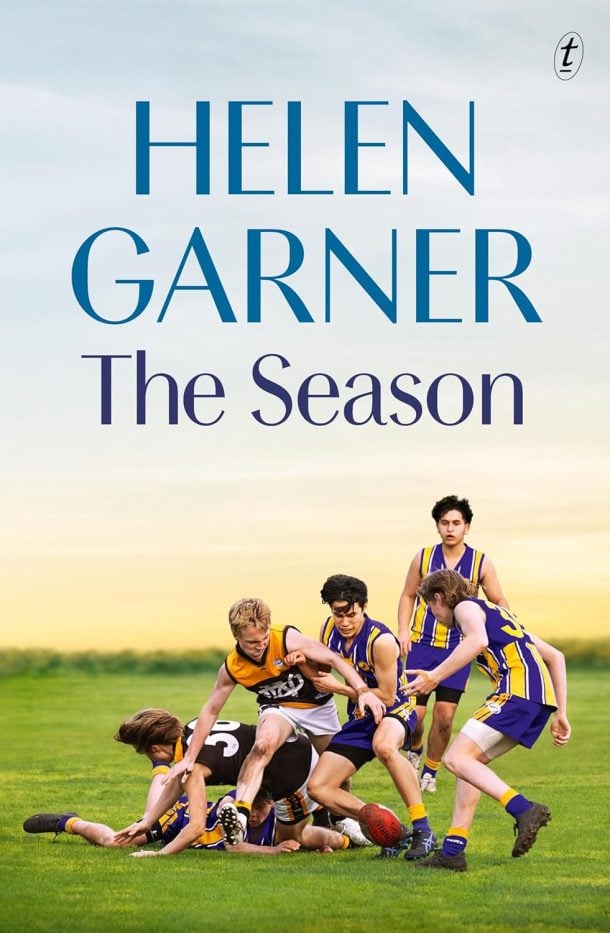 The Season by Helen Garner
The Season by Helen Garner
In any other writer’s hands, a memoir focused on their grandson’s season of under-16s football could be dismissed as self-indulgent twaddle. This is not ‘any other writer’, though. This is Helen Garner. Her observational skills and her ability to drill down into character and place, make this not only an excellent memoir but also an examination of nascent masculinity, ageing, and the place of sport in contemporary life. Garner worried that she’d said all she needed to say in previous books, and there was nothing that interested her enough to write about. Even when she started this memoir, she worried that it was a book that didn’t deserve to be written. Helping ease her into the memoir is the fact that a footy season has a narrative of its own: a beginning, middle and end. Her skill is in recording it, then retelling it in a way which makes it relatable. Garner attends training and games and is invisible to the players. This is not a book where intimate, longstanding knowledge of footy is needed. Garner doesn’t understand all the rules; she just adores her grandson and the Western Bulldogs. It’s the love of both – rather than the intricacies of football – which leads the reader through the narrative. In a boost to the narrative (or perhaps the reason behind it), her grandson, Amby, plays well, as does the team. Garner is justly proud. Amby also carries injuries throughout the season, which has her concerned. But footy is physical and she writes about the vitality of Amby’s athletic body’s ability to run, kick, chase, tackle, then recover and do it all again next weekend. She also writes about her own body: she’s 80, and her eyes and ears are failing her. She has, however, the mental acuity of a much younger woman and the ability to stay current, such as using ‘versing’ – the contemporary offshoot of versus. Amby’s season runs parallel with Garner’s beloved Bulldogs. These AFL professionals win occasionally, lose consistently, and still her favourite players remain loved. Amby’s team is having a wonderful season, winning more than they lose. Sport in general, and footy in particular, is a physical space, where controlled aggression is considered an essential component on the way to winning … but there’s a fine line. These are still boys, albeit on the verge of becoming men. They make many mistakes, both sporting and behavioural. Fights break out on the field; homophobic and sexist slurs are hurled. Amby doesn’t fight but confesses his inner anger to his grandmother. This is a welcome meeting of literature and sport via the portal of life-writing and, despite Garner’s initial misgivings, chronicling the year of these almost-men was a consummate choice. Good Reading Magazine, December – January 2025.
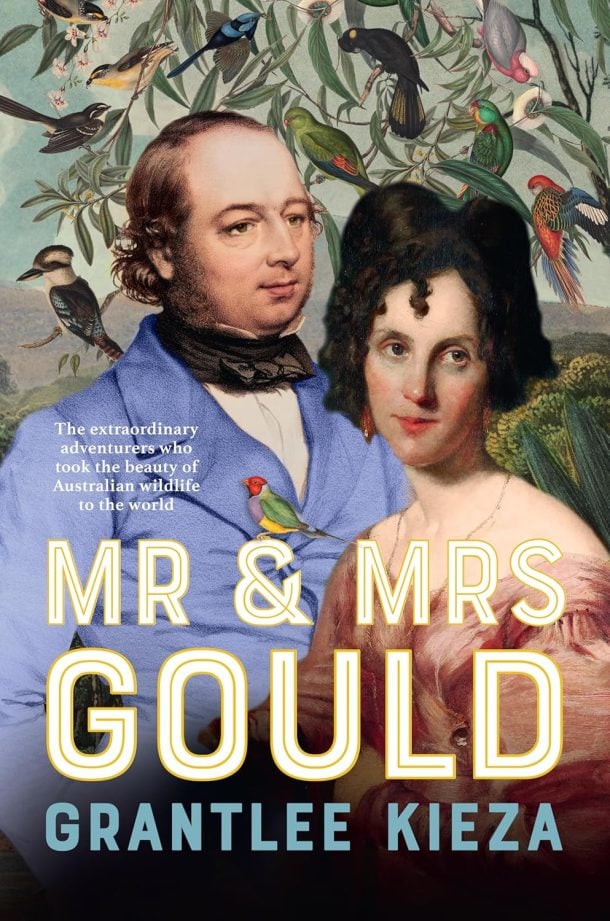 Mr & Mrs Gould by Grantlee Kieza
Mr & Mrs Gould by Grantlee Kieza
Hands up, all those readers who belonged to the Gould League of Bird Lovers in their youth! Now known as the Gould League, and sponsoring general environmental education, it has branches only in Victoria and Western Australia, but more than one million Australians reportedly were once members.This latest historical work by Kieza, joining a huge list of his subjects ranging from Ned Kelly’s mother to Henry Lawson, deals mainly with the two years John Gould and his wife, Elizabeth, spent in Australia from 1838. That foray into the colonies resulted in Gould’s most famous work, The Birds of Australia, published in eight volumes from 1840. Elizabeth Gould is the artist who mostly illustrated her husband’s work and despite the knowledge that John Gould never painted a bird in his 18 major publications, he is still regarded as the outstanding bird artist of the 19th century. We learn how John, a gardener at 13 at the Royal Gardens of Windsor, became a taxidermist and ‘animal stuffer’ for King George IV, but pivoted his skills to become known as a superb ornithologist. There is such a plethora of documents about Gould’s era available for writers such as Kieza, that sometimes the central characters in his book become overshadowed by titbits about Edward Lear or Sir Joseph Banks. John Gould was driven in his ambition, and barely civil sometimes to his faithful assistants, but readers’ admiration must go to Elizabeth, a fine artist who provided astonishing illustrations for her husband’s words about birds from around the world, all the while coping with multiple pregnancies, and dying soon after her eighth child was born. Her bereft widower named Australia’s glorious Gouldian finch in her memory, a touching tribute. Good Reading Magazine, March 2025.
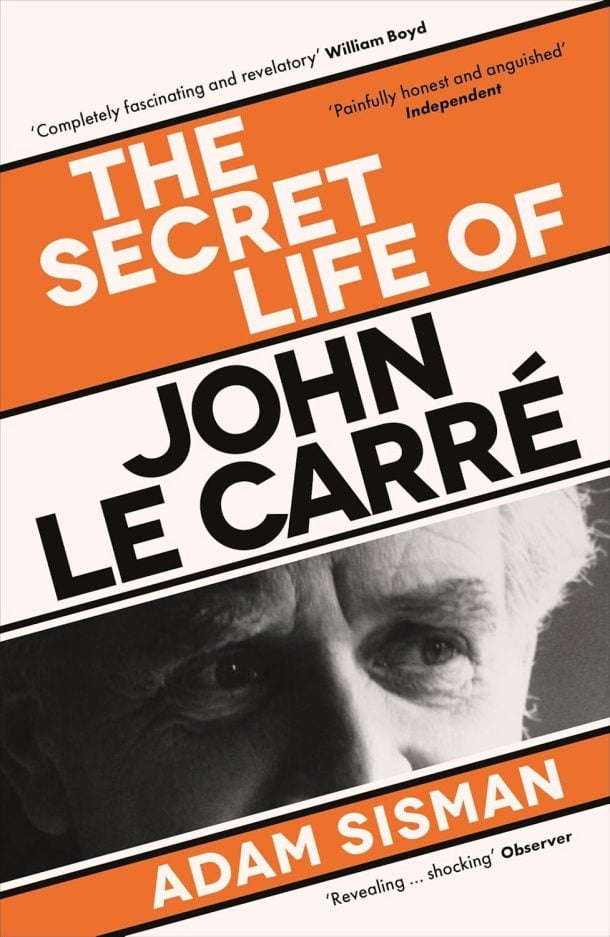
The Secret life of John Le Carre by Adam Sisman
A“supplement” to Sisman’s 2015 biography that focuses on material his subject did not want to see published during his lifetime.David Cornwell (1931-2020), who took the pen name John le Carré for reasons that are still unknown, was conscientious, hardworking, literate, inventive, witty, and capable of great generosity, especially to the women he pursued while married to one of his two legal spouses. Aware but unapologetic about his own failings, he blamed them on a father who had misbehaved shamelessly and a mother who abandoned the family when he was a child, leaving him, as Sisman observes, “with a lifelong mistrust of women” who had even less reason to trust him. Arguing that Cornwell’s serial womanizing was not a distraction from his copious output but an active driver of it, Sisman demonstrates how betrayal was the leitmotif of both the novelist’s life and his art and that however completely he depended on his wives, he depended on a new woman to serve as his inspiration for each book. Anyone familiar with le Carré’s oeuvre will know that that’s an awful lot of women. Of the three affairs Sisman traces in the greatest detail, only one of them—Cornwell’s extended relationship with researcher Sue Dawson—persuasively bears out his first argument, as analogies between Cornwell’s paranoid behavior and le Carré’s obsession with spycraft multiply throughout its course. Sisman makes a more convincing case for his second argument, tracing the author’s professional decline to his inability to attract muses for the increasingly formulaic novels he continued to write. Sisman’s return to the “secret annexe” of material Cornwell’s son urged him to leave out of his earlier biography is given even greater interest by his unusual candor in considering the ethical implications of his tell-all coda for Cornwell, his many lovers, and biographical projects generally. A one-of-a-kind revisiting of a wondrously productive life lived at the expense of two wives and many lovers. Kirkus Reviews, July 2023.
Return to top
COOKING
| Narayan, Justin | Everything is Indian |
Return to top
GENERAL FICTION
| Feeney, Alice | Beautiful ugly |
| Freeman, Brian | Robert Ludlum’s The Bourne vendetta |
| Harkaway, Nick | Karla’s choice |
| Kemp, Kate | The grapevine |
| Lowe, Ali | The private island |
| Mahjouri, Nadia | Half truth |
| McAllister, Gillian | Famous last words |
| McConaghy, Charlotte | Wild dark shore |
| McKellar, Lauren K. | The calendar mums |
| Oswald, Debra | One hundred years of Betty |
| Rimmer, Kelly | The things we cannot say |
| Unger, Lisa | Close your eyes and count to 10 |
| Watson, Mary | The cleaner |
| Wharton, Anna | The imposter |
 Beautiful Ugly by Alice Feeney
Beautiful Ugly by Alice Feeney
Following the mysterious disappearance of his wife, a struggling London novelist journeys to a remote Scottish island to try to get his mojo back—but all, of course, is not what it seems. Grady Green hits the pinnacle of his publishing career on the same night that his life goes off the rails—first his book lands on the New York Times bestseller list, and then his wife, Abby, goes missing on her way home. A year later, Grady is a mere shadow of his former self: out of money and out of ideas. So, when his agent, Abby’s godmother, suggests that he spend some time on the Isle of Amberly, in a log cabin left to her by one of her writers, it seems as good a plan as any. With free housing for himself and his dog and a beautiful, distraction-free environment, maybe he can finally complete the next novel. But from the very beginning, Grady’s experiences with Amberly seem weird, if not downright ominous: As a visitor, he’s not allowed to bring his car onto the island; the local businesses are only open for a few hours at a time; and there are no birds. At all. Not to mention the skeletal hand he finds buried under the floorboards of the cabin, the creepy harmonica music in the woods, and the occasional sighting of a woman in a red coat who’s a dead ringer for Abby. As Grady falls deeper and deeper into insomnia and alcoholism, he begins to realize his being on the island is no accident—and that should make him very afraid. Through occasional chapters from before Abby’s disappearance, told from her point of view, we learn that Grady is not necessarily a reliable narrator, and the book’s slow unfolding of dread, mystery, and then truth is both creative and well-paced. Every chapter heading is an oxymoron, like the title, reminding us of the contradictions at the heart of every story. “Nasty little fellows…always get their comeuppance,” a movie character once said. Deeply satisfying. Kirkus Reviews, October 2024.
 Robert Ludlum’s The Bourne Vendetta by Brian Freeman
Robert Ludlum’s The Bourne Vendetta by Brian Freeman
Jason Bourne enters a deadly race to find a laptop.The throughline in the Bourne series is that someone is always out to get him. Maybe they want him dead. Maybe they want him in bed. And, once, he took a bullet to the head, which is the whole premise. The “nowhere man” remembers nothing of his past identity, and he works for a shadowy agency called Treadstone, the new head of which is a woman named Shadow. The elusive prize everyone seeks is a hacked database commonly referred to as the Files. The Files are filled with secret dirt about powerful people, every blackmailer’s fondest dream. Whoever controls this data could either destroy the deep state or protect it indefinitely. Everybody wants the information: the “FBI, CIA, NSA, DOJ. Plus most of our enemies overseas.” One such enemy is Cody, a Russian thug operating in Estonia. The files are on a laptop, and it doesn’t seem to occur to anybody that there could be copies in other places, but that doesn’t get in the way of a good story. Shadow wants the laptop, but so does the rogue ex-Treadstone agent Johanna. Two things the women have in common: They hate each other, and they have both enjoyed bedtime with Jason. Sex between Bourne and Johanna was “like two scorpions trying to mate.” That’s quite good, apparently, if you can get the visual out of your mind. And if you’re thinking that Jason doesn’t have enough women in his life, the Canadian journalist Abbey Laurent returns. Series fans will remember that she left him in The Bourne Sacrifice (2022) because he was too dangerous to be around. Now, she’s writing a book about a fatal fire, and she’s drawn back into his life. All three women are strong characters, but there’s also an Estonian damsel in distress named Tati, who is Cody’s prisoner. “‘Jason,’ she murmured aloud, her voice cracking, her soul praying. ‘Where are you?’” Her faith in him is complete, and completely warranted. Cody knows that Bourne has “a weakness for women in trouble.” The action starts early with the explosion of a limousine and a vivid description of what happens to its occupants, and from there the pace doesn’t flag. Classic Jason Bourne, loaded with action, sex, and excitement. Kirkus Reviews, October 2024.
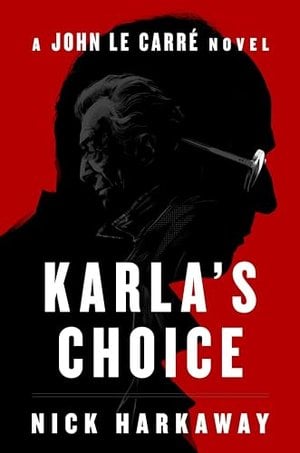 Karla’s Choice by Nick Harkaway
Karla’s Choice by Nick Harkaway
Harkaway, who’s John le Carré’s son, slips this spy tale into the 10-year gap between The Spy Who Came In From the Cold (1963) and Tinker Tailor Soldier Spy (1974). In London in the early spring of 1963, a Hungarian assassin named Miki Bortnik shows up at a literary agent’s office to kill a man named Laszlo Bánáti, on instructions from the Thirteenth Directorate (think KGB). But the repentant killer confesses to Bánáti’s assistant, Susanna Gero, that God has told him not to do it. In any case, Bánáti has disappeared. Susanna tells MI6, who naturally wants to know what the Soviets are up to. Meanwhile, George Smiley has retired from the Circus (MI6) and is spending his time with his wife, Ann. “There was a rumour—unconfirmed and a little scandalous—that George Smiley might almost be happy.” Control (the head of British Intelligence) orders that Smiley be persuaded to deal with the case. Although it would be a temporary assignment, Smiley at first demurs, saying, “Let the old dog sit by the cooker.” But he ultimately agrees, much to Ann’s quiet exasperation. She knows he loves her, but the Circus is his “grey mistress.” Bánáti is discovered to be a Soviet agent known as Róka, and now he’s on the run. Smiley’s nemesis is the unseen Soviet Intelligence officer known as Karla, a dark presence in three previous le Carré novels. The best intelligence work is slow, and “spying is waiting.” The novel proceeds at a pace to match as it immerses the reader in a world of dread and drear, “shadows and sorrows.”A Cold War yarn befitting the world of le Carré. Kirkus Reviews, August 2024.
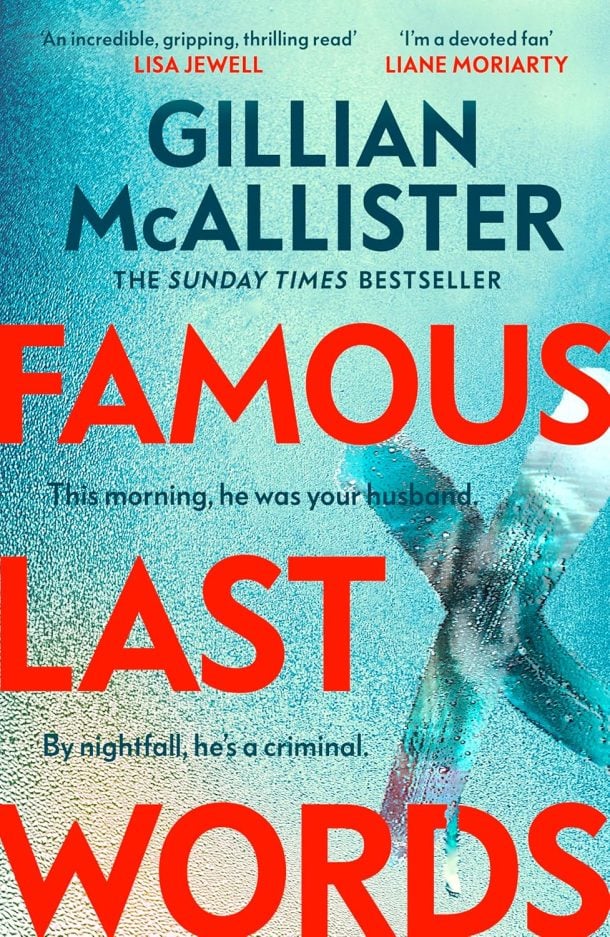 Famous Last Words by Gillian McAllister
Famous Last Words by Gillian McAllister
Marital secrets animate this heartrending standalone from McAllister (Wrong Place, Wrong Time). On a June morning in London, Camilla “Cam” Deschamps wakes to find that her husband, Luke, isn’t home. Then she discovers the cryptic note he left behind: “If anything… it’s been so lovely with you both.” As Cam tries to convince herself that Luke left early for his ghostwriting job, she drops off their infant daughter, Polly, at day care before heading to work. Soon after she arrives at her office, Cam learns that a hostage situation is developing at a nearby warehouse and Luke is the gunman. The seasoned hostage negotiator on the scene is convinced Luke is a family man who won’t resort to violence, but after Luke releases one of the hostages, he shoots the other two, then vanishes. Years pass with no sign of Luke, and Cam struggles to rebuild her life while secretly attempting to piece together clues that could point to her husband’s whereabouts or explain his actions. Though the pace can drag and certain twists are a bit convoluted, the gut-wrenching plight of McAllister’s three-dimensional heroine will keep readers flipping pages. This satisfies. Publisher’s Weekly, May 2024.
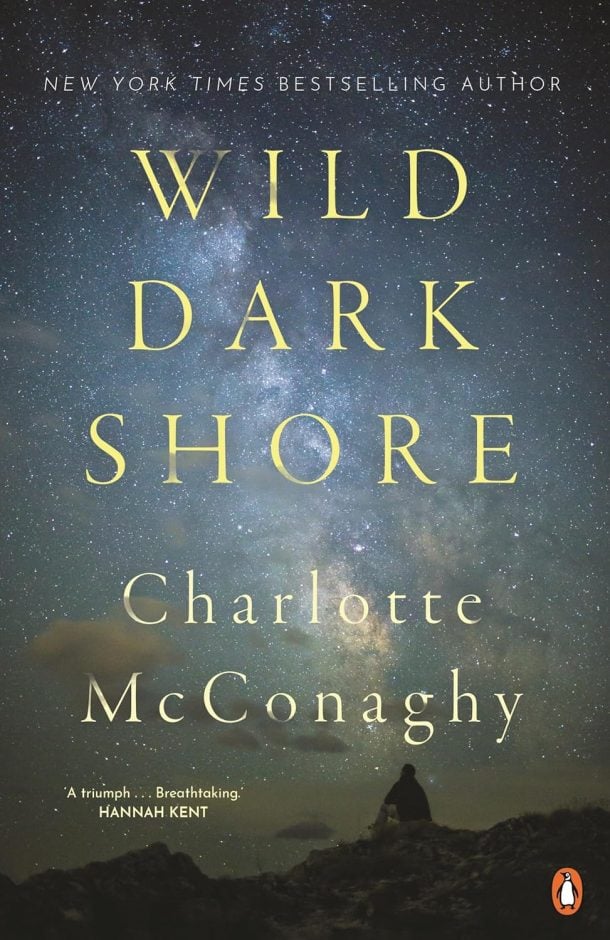
Wild dark shore by Charlotte McConaghy
The reality of climate change serves as the pervasive context for this terrific thriller set on a remote island between Australia and Antarctica. Four family members and one stranger are trapped on an island with no means of communication—what could go wrong? The setup may sound like a mix of Agatha Christie and The Swiss Family Robinson, but Australian author McConaghy is not aiming for a cozy read. Shearwater Island—loosely based on Macquarie Island, a World Heritage Site—is a research station where scientists have been studying environmental change. For eight years, widowed Dominic Salt has been the island’s caretaker, raising his three children in a paradise of abundant wildlife. But Shearwater is receding under rising seas and will soon disappear. The researchers have recently departed by ship, and in seven weeks a second ship will pick up Dominic and his kids. Meanwhile, they are packing up the seed vault built by the United Nations in case the world eventually needs “to regrow from scratch the food supply that sustains us.” One day a woman, Rowan, washes ashore unconscious but alive after a storm destroys the small boat on which she was traveling. Why she’s come anywhere near Shearwater is a mystery to Dominic; why the family is alone there is a mystery to her. While Rowan slowly recovers, Dominic’s kids, especially 9-year-old Orly—who never knew his mother—become increasingly attached, and Rowan and Dominic fight their growing mutual attraction. But as dark secrets come to light—along with buried bodies—mutual suspicions also grow. The five characters’ internal narratives reveal private fears, guilts, and hopes, but their difficulty communicating, especially to those they love, puts everyone in peril. While McConaghy keeps readers guessing which suspicions are valid, which are paranoia, and who is culpable for doing what in the face of calamity, the most critical battle turns out to be personal despair versus perseverance. McConaghy writes about both nature and human frailty with eloquent generosity. Readers won’t want to leave behind the imagined world of pain and beauty that McConaghy has conjured. Kirkus Reviews, January 2025
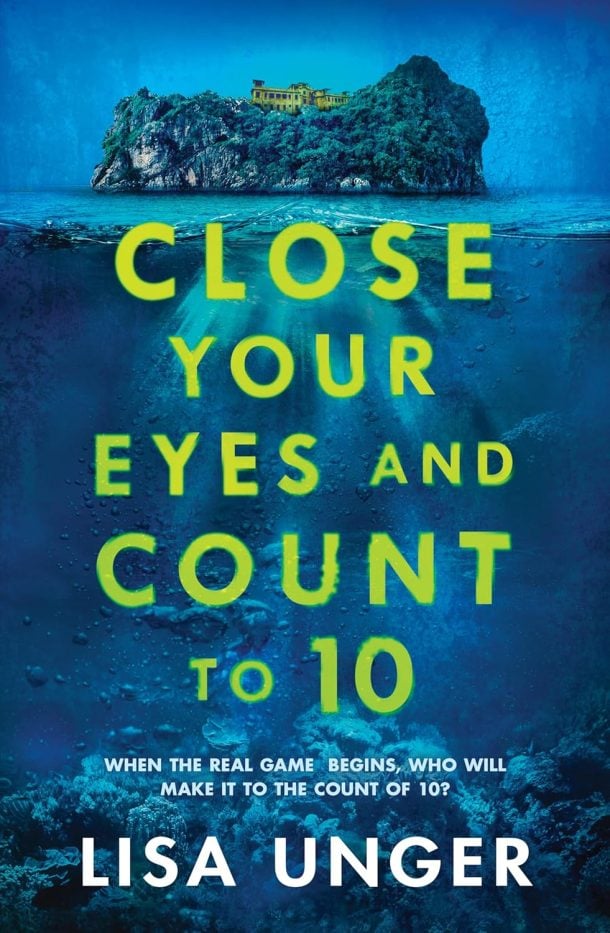 Close your eyes and count to 10 by Lisa Unger
Close your eyes and count to 10 by Lisa Unger
Engaging characters meet for a game that turns deadly. Adele Crane’s life was shattered when her seemingly wonderful husband, Miller, vanished along with millions of dollars embezzled from the tech company he founded. Adele has been struggling to make a living and raise her traumatized kids: fiercely independent Violet and sweet-natured introvert Blake. Always athletic, she’s rebuilt her confidence with half-marathons and an online presence as a health influencer. So, it makes sense when Blake suggests she apply for a streaming reality competition for influencers called Extreme Hide and Seek. Contestants are taken to some challenging location, where they hide from the Extreme team. Last one found wins $1 million. That’s how Adele finds herself on remote Falcão Island, the site of Enchantments, a luxury resort built in the 1980s but long abandoned and now about to collapse. It’s quickly apparent that the Extreme team itself is on the verge of chaos. Its founder and star, Maverick Dillan, began his career as a kid doing skate stunts for viral videos, but now he heads a hugely successful enterprise—or so it seems. Maverick is approaching middle age, and all his past injuries and current pressures are catching up with him, accelerated by the fact that on the last round of Extreme Hide and Seek, one contestant, a young woman named Chloe Miranda, hid and was never found—something that internet vigilantes won’t let him forget. Maverick’s girlfriend, no-nonsense Angeline, is holding him and the company together, but it’s tough. The team’s other three members are his oldest friends, but fractures are appearing. Adele’s competitors, a former kids’ show host called Wild Cody and a famous young mountain climber named Malinka Niqui, have problems of their own. As they assemble on Falcão for the contest, they’re warned to leave by a mysterious old woman with a paramilitary backup team—and then a huge tropical storm blows in. Weaving together multiple points of view from her believable characters, Unger plunges the reader right into a sense of dread, then skillfully ratchets up the physical terrors of the challenge while revealing one disturbing secret after another. The perils of the real and virtual worlds collide effectively in this relentlessly paced thriller. Kirkus Reviews, December 2024.

The Cicada House by Ella Ward
For a debut novel, Ward has crafted a compelling narrative of woman’s navigation through a series of harrowing experiences, before finding out who she is. Caitlin has had a challenging life. Born in Australia to a young English girl seeking adventure, she becomes an orphan at five and goes to live with her ageing grandparents in England. She is loved but cosseted. On her 40th birthday, she’s alone. Her husband, Paul, is away. She has no plans. She hates her job, and her only confidence is her sister-in-law, Jan. She calls her grandfather, Bill, at his nursing home and he remembers her birthday and, surprisingly, tells her she has a substantial inheritance. When Paul returns, he tells her that he’s leaving her. He’s found someone else and is in love. Caitlin quits her job and flies to Australia to escape. She is drawn to Arana Bay, a tranquil seaside village a few hours from Melbourne. She rents a cottage, Cicada House. It’s old and run-down but she loves it. There’s a walkway to the beach and slowly, as she swims every day. She tans and relaxes. She meets a number of locals, and this once introverted, self-centred woman slowly takes an interest in other people. She starts to actively listen, connect and make friends. Then she meets David. He’s unlike any man she’s ever met. Ward has a keen understanding of the complexities of modern relationships. This is a witty, warm and intriguing love story. Good Reading Magazine, March 2025.
Return to top
HISTORICAL FICTION
| Cooper, Tea | The talented Mrs Greenway |
| Dunn, Kat | Hungerstone |
| Hay, Alex | The queen of fives |
| Norrington, Leonie | A piece of red cloth |
| Parkins, Wendy | The defiance of Frances Dickinson |
| Spencer, Jonathan | Napoleon’s run |
| Steeds, Lucy | The artist |
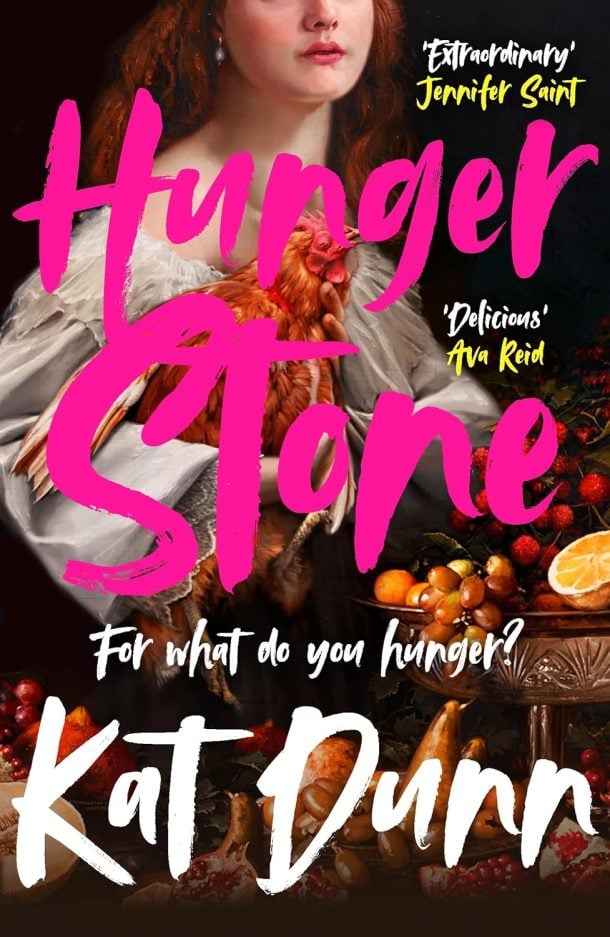 Hungerstone by Kat Dunn
Hungerstone by Kat Dunn
Dunn (Dangerous Remedy) offers a moody and triumphant retelling of Carmilla, the 1872 gothic novella by Sheridan Le Fanu, about a married woman in Victorian London who experiences an existential and sexual awakening at the hands of a female vampire. Lenore Crowther, 30, a restless aristocrat, sleeps alone in the drafty mansion she shares with Henry, a steel mill magnate, whom she married for his money. When the couple witnesses a roadside carriage accident, they rescue the distraught victim, Carmilla Kernstein. As Carmilla recovers, Lenore realizes how much their new guest resembles a ghostly girl who’s been haunting her dreams. Soon, Carmilla kindles a long-buried desire in Lenore and turns Lenore into a vampire like herself. Bodice-ripping and bloodsucking ensue, as Lenore discovers her independence. Dunn portrays the newly awakened Lenore as increasingly outspoken, empowered, and fearless, turning the novel into a meditation on womanhood, corporate greed, and queer desire, delivered in frank prose (“To be a woman is a horror I can little comprehend”). This revitalizes Le Fanu’s classic tale without losing any of its appeal. Publisher’s Weekly, November 2024.
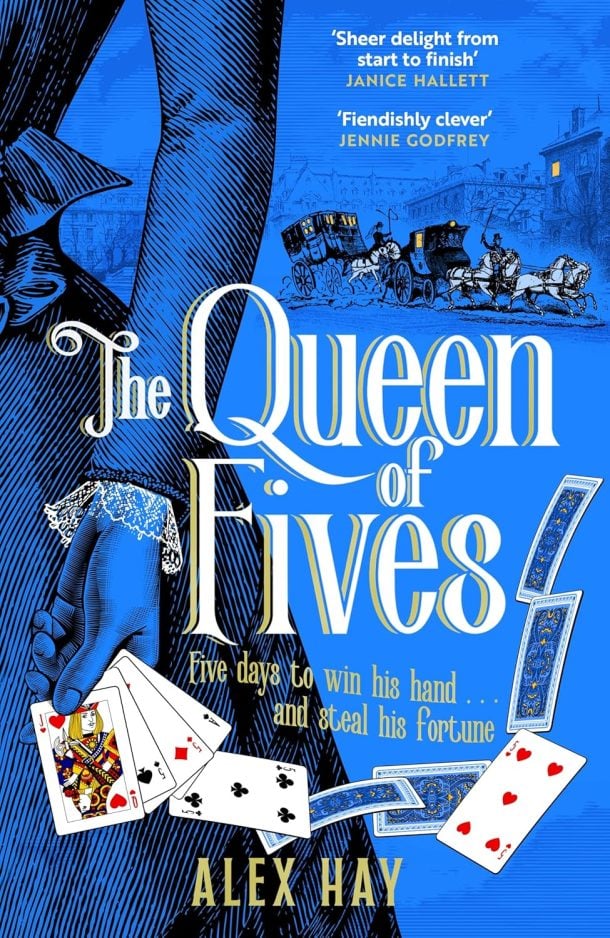 The Queen of Fives by Alex Hay
The Queen of Fives by Alex Hay
Bridgerton meets The Sting in this effervescent offering from Hay (The Housekeepers). In 1898, London con artist Quinn Le Blanc, known as the Queen of Fives, sets her sights on Max, the wealthy Duke of Kendal, whom she plans to marry and fleece out of his fortune. Pretending to be an heiress, she finagles an invitation to a party at Buckingham Palace, where she catches Max’s eye while pretending to stop a fake royal assassination plot. According to the Rulebook that governs confidence schemes, Quinn has exactly five days to spring her trap. Standing in her way are Max’s sister and their formidable stepmother, both of whom have reasons for not wanting to see the marriage take place. As Quinn and Max get to know each other, she realizes she’s not the only one well-versed in the art of deception. Hay has conceived of a wholly original take on Victorian London and populated it with a gallery of colorful underworld types. The plotting will have readers on the edges of their seats as one twist after another sets the stage for a series of jaw-dropping revelations. This literary confection is a delectable treat. Publisher’s Weekly, August 2024.
 A Piece of Red Cloth by Leonie Norrington
A Piece of Red Cloth by Leonie Norrington
The best fiction allows the reader to enter times, cultures and places otherwise inaccessible. Children’s fiction writer Leonie Norrington was commissioned by her adoptive mother, Yolŋu woman Clare Bush, to share this piece of pre-colonial history—a story passed down through generations of Yolŋu oral tradition—with a wider audience. Norrington and cultural custodians and collaborators Merrkiyawuy Ganambarr-Stubbs, Djawundil Maymuru and Djawa Burarrwanga have crafted a rich and transportive novel in the vein of Hannah Kent or Tara June Winch. Before the white settlement of this country, the Yolŋu conducted trade with overseas neighbours, including the Macassans, who were under Dutch rule in the 1600s. In the novel, Batjani’s granddaughter, Garritji, is promised to Djapalitjarri once she has undergone her puberty ceremonies. But last season’s trade with the Foreigners brought freely flowing arrack (alcohol) that has caused division within the Yolŋu and created fear for their young women. Batjani suspects that Garritji is under threat and will do whatever she can to protect her. Pre-colonial northern Australia is conjured here in exquisite detail, the landscape woven into every fibre of this novel. Layers of spiritual and quotidian life sit atop each other as we see hunting, foraging, cooking, managing relationships and creating ceremony through Yolŋu eyes. The novel captures the resilience, dignity and power of the Yolŋu people as they face foreign vices such as arrack and opium and the far greater threat of ideological greed embodied by the Barbarians, who now accompany the Foreigners. Capitalism is wielded as a cudgel, set to destroy this carefully managed equilibrium, but the Yolŋu’s strength is not to be underestimated. Books+Publishing, December 2024.
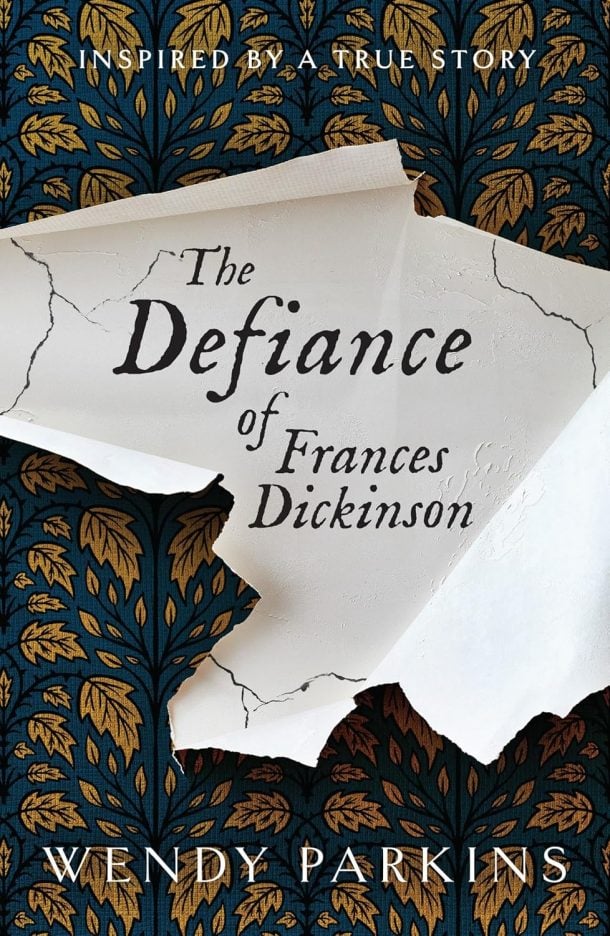 The Defiance of Frances Dickinson by Wendy Parkins
The Defiance of Frances Dickinson by Wendy Parkins
In the mid-1800s England, how could a woman free herself from an abusive marriage? With a great deal of difficulty, it seems. For this novel, Parkins has used actual court documents and depositions as well as letters and newspaper accounts of a sensational 1847-48 trial in the Court of Arches, an ecclesiastical court that preceded the English secular divorce court. So, while the terminology in letters and documents may seem archaic and stilted, it is characteristic of the times. Frances Dickinson had married Scotsman John Geils at 18, but for the next seven years suffered what in modern parlance is called gaslighting and coercive control, as well as his infidelities and physical abuse. She bore him daughters and had suffered miscarriages during her marriage. When he started a suit for the restitution of conjugal rights, Frances, an heiress in her own right, sought a separation, alleging not only adultery, but also cruelty and sodomy. Newspapers of the day reported those court proceedings verbatim, with the case one of the most sensational at the time. Frances came in for a good deal of abuse, being accused of everything from deception to immorality. All evidence in the court was submitted as written depositions, including one from a brave former servant who wrote that Geils had sexually coerced and violated her, providing evidence of adultery, securing Frances a legal separation, and she reverted to her maiden name. Parkins has carried out enormous research into this case and visited places in England, Scotland and Italy, where Frances had lived. Perhaps we will read more about her in the future. Highly recommended. Good Reading Magazine, December-January 2025.
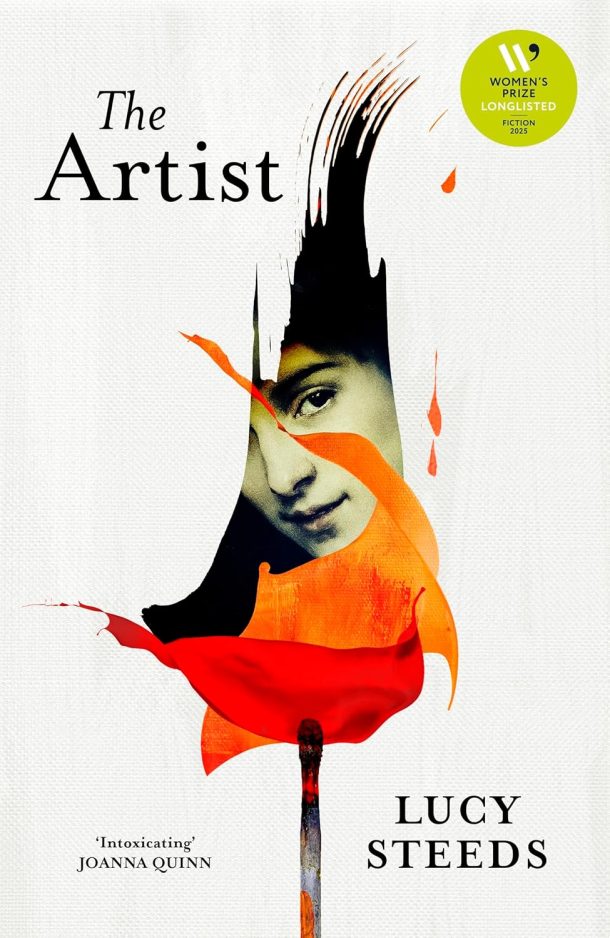 The Artist by Lucy Steeds
The Artist by Lucy Steeds
Artistic patriarchs who wreak emotional havoc on their families have provided rich literary rewards in recent years. Charlotte Mendelson examined the artistic tyrant in The Exhibitionist, while Rachel Joyce’s forthcoming The Homemade God portrays the psychological dysfunction of four siblings whose problems stem from their father, a domineering painter. Lucy Steeds’s impressive debut, set in 1920, embraces a similar theme. The patriarch in question is a renowned but doggedly private artist, Edouard Tartuffe (Tata), who lives in Provence with his seemingly timid and obedient niece, Ettie. Many years previously, Ettie’s mother ran away with a lover, became pregnant and, later, suffered a tragically early death: “Ettie cannot remember her mother’s face. It is one of the things that pains her most, makes her clutch her stomach at odd moments.” In the care of her uncle for as long as she can remember, Ettie keeps house for him, cooks his meals, and procures and arranges the various ephemera required for his paintings. The stifling Provence landscape and the visceral nature of creating and consuming art are evoked beautifully by Steeds. Into this claustrophobic and controlling household comes Joseph, an ambitious young journalist determined to prove his worth to his father after refusing to fight in the first world war. His brother, meanwhile, languishes in a hospital with severe PTSD, exacerbating Joseph’s sense of inadequacy and shame at his pacificism: “He had never been able to say the word in front of his father without stammering. He had never been able to hold his gaze or stop his hands from shaking.” The stifling Provence landscape and the visceral nature of creating and consuming art are evoked beautifully by Steeds, whose command of language is dextrous and powerful: “Sunlight radiates from the yellow fields and dust sticks to the olive trees, dark and fragrant in their arthritic twists.” Later, “crickets whir and heat beats down on Joseph’s head”, while the painting Tartuffe has created “has summoned all the light in the world and put it in the young man’s palm”. The reveal about Ettie’s own artistic ambitions, when it comes, is not the narrative twist it might have been (arguably, the novel would have been stronger without the prologue), but that does not diminish the book’s impact. Steeds’s depiction of Ettie’s suppressed talents shines a light on generations of female artists who no doubt suffered similar obstacles, making for a hugely accomplished portrait of ambition and self-fulfilment. The Guardian, January 2025
Return to top
MYSTERY
| Edwards, Martin | Murder by the book |
| French, Nicci | The last days of Kira Mullan |
| Hardy, Fiona | Unbury the dead |
| Hunter, Cara | Making a killing |
| Jackson, Holly | Good girl, bad blood |
| Kalagian Blunt, Ashley | Cold truth |
| Lawhon, Ariel | The frozen river |
| McCluskey, Laura | The wolf tree |
| McMahon, John | Head cases |
| Patterson, James | 25 alive |
| Rose, Karen | Dead man’s list |
| Salter, Michelle | The suffragette’s daughter |
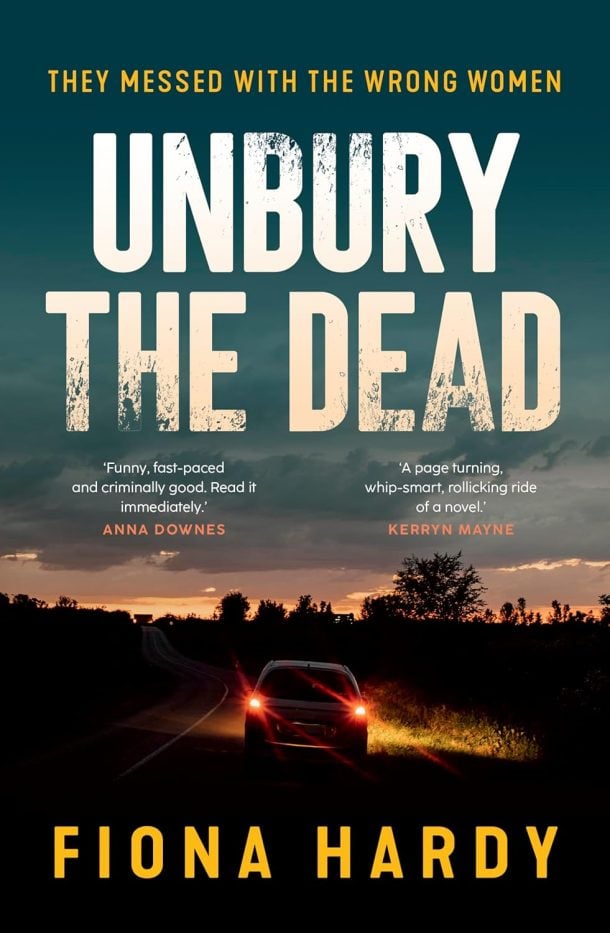 Unbury the Dead by Fiona Hardy
Unbury the Dead by Fiona Hardy
Fiona Hardy’s Unbury the Dead is a masterful blend of fast-paced crime and Australian noir, balancing grit and dry humour with effortless skill. Set against the vivid backdrops of rural and suburban Victoria, this crime thriller introduces two heroines – Alice and Teddy – and their warm and authentic friendship. Hardy’s knack for crafting sharp, natural dialogue shines throughout, making even the darkest moments crackle with life. Alice and Teddy work for Choker, a man running a morally ambiguous operation. Alice is hired for a seemingly quick job for good pay – to drive a dead billionaire home to his resting place before anyone realises he is gone. Meanwhile, Teddy is tasked with finding a missing teenager no one seems to care about. The chapters alternate between Alice and Teddy as their parallel experiences reveal some great plot twists. Hardy excels in creating tension, particularly through the layered motivations of her lead characters and their morally complex decisions. The dynamic between Alice and Teddy anchors the novel, while the well-drawn supporting characters – Choker, Art, and Rusty – provide counterpoints of humour and emotional richness. For fans of Peter Temple’s Jack Irish novels or Mick Herron’s Slough House series, Unbury the Dead is a terrific read that marks an impressive adult debut for Hardy (How to Make a Movie in 12 Days). Books+Publishing, February 2025.
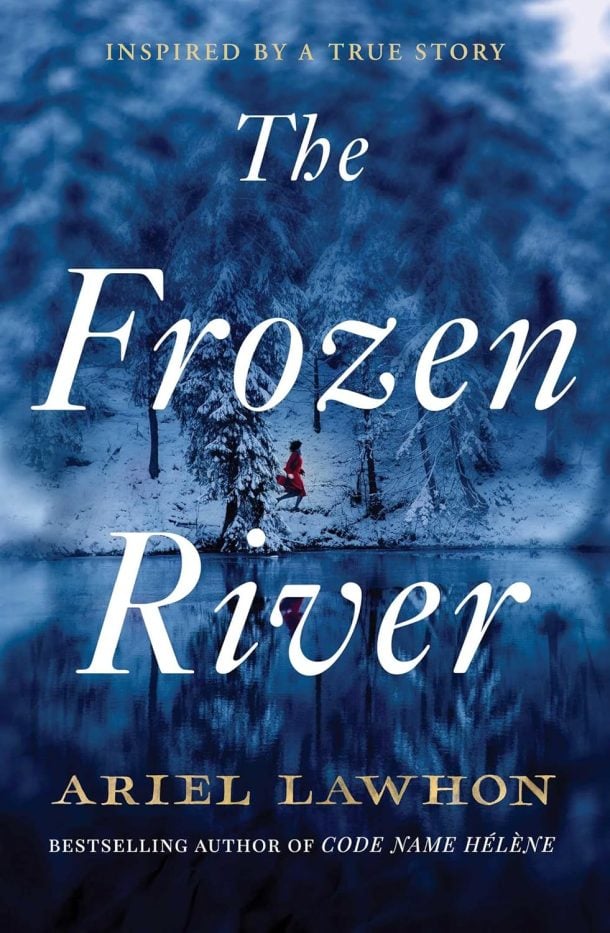
The Frozen River by Ariel Lawhon
Lawhon (Code Name Hélène) draws from the diary of an 18th-century midwife for the stirring story of one woman’s quest for justice. In 1789 Maine, 54-year-old midwife Martha Ballard is asked to help determine the cause of death for Joshua Burgess, an accused rapist whose body was found frozen in the river. Martha is convinced that Burgess was beaten and hanged before he was thrown into the water. Several months earlier, she treated a woman named Rebecca Foster for injuries sustained from rape, and Rebecca told her the assailants were Burgess and Joseph North, a judge. After a court determines there’s not enough evidence against North for a rape charge, despite Martha’s testimony about Rebecca’s injuries, a trial is arranged on different charges, but North disappears. Martha attempts to prove Burgess was murdered, hoping to bring scrutiny to North as a suspect in the killing, whose motive may have been to keep Burgess from testifying against him about the rape. Lawhon combines modern prose with the immediacy of her source material, making for an accessible and textured narrative. This accomplished historical powerfully speaks to centuries-old inequities that remain in the present day. Publisher’s Weekly, August 2023.
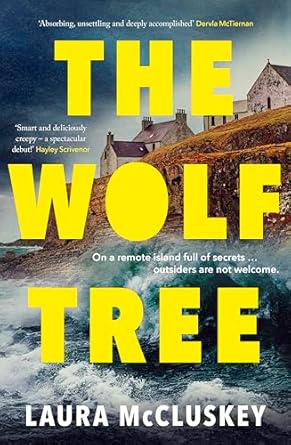
The Wolf Tree by Laura McCluskey
A young cop and her weathered partner brave a tempestuous sea crossing to investigate a death in a remote community off the coast of Scotland. When DI Georgina Lennox and her partner, Richie Stewart, arrive on the island of Eilean Eadar, they are half-chilled to the bone and already known to—and disliked by—most of the people around them. A young man fell to his death from the lighthouse a few weeks before, and they’ve been sent from Glasgow to confirm his death was a suicide. To a community suspicious of “mainlanders,” a category that includes anyone who can’t trace their bloodline back generations, the two cops are a nuisance at best, a threat at worst, and the unfriendly welcome begins to feel downright hostile when George sees someone outside their cottage at night wearing a wooden wolf mask. She can also hear the howls of wolves, despite the fact that there are none on the island. Still recovering from a near-death experience on the job eight months prior, George is dealing with her own trauma, and her tendency to self-medicate in order to keep the headaches at bay. Five days in the salt-crusted, fish-centered village leads to little clarification about Alan Ferguson’s death, but a whole lot of new mysteries, including the disappearance of three lighthouse keepers in 1919. Even if a remote, insular Catholic island guided by a steely-eyed priest sounds like a familiar folk horror set up, McCluskey is masterful at building suspense around a sense of place and a feeling of otherness. And George, fretfully uncomfortable in her skin and her partnership, is a prickly, vulnerable, completely engaging heroine with a cop’s instincts through and through, a stubborn streak that nearly gets her into trouble and the courage to risk herself in the quest for truth. Idealistic, maybe. But properly gothic as well. Kirkus Reviews, November 2024.
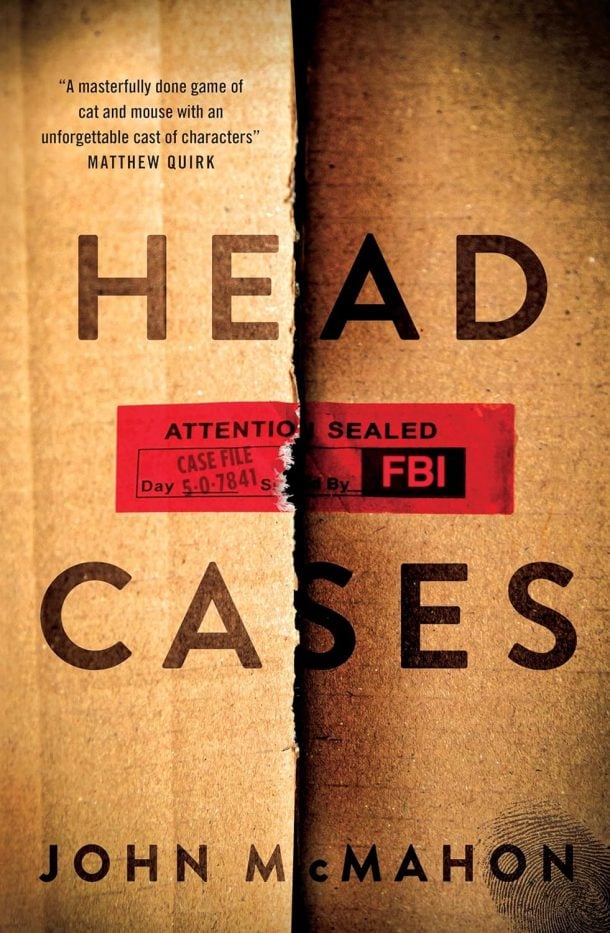
Head Cases by John McMahon
McMahon kicks off a new series about an FBI unit’s hunt for a serial killer who’s targeting other serial killers. And not just any unit: It’s the Patterns and Recognitions Unit, where Special Agent Gardner Camden—whose memory is a lot more finely honed than his people skills—works with mathematically oriented Cassie Pardo and newcomer Richie Brancato under the leadership of Frank Roberts. Their goal is to identify and take down whoever gutted Ross Tignon, who murdered three women and whom Camden thought had died seven years ago. The discovery that Tignon has returned from the dead only after he’s been killed again would be jarring enough, but McMahon turns up the heat with news that Barry Fisher, who served 31 years for his own string of homicides, met his end the day after he was paroled. The predator is obviously playing games with the law, carving a “50” into Tignon’s chest, stashing each of Fisher’s organs in a separate plastic bag in the house his brother let him stay in, planting cryptic clues on both corpses, and phoning Camden to brag about his accomplishments and threaten his loved ones in case the FBI hasn’t picked up the pattern on its own. Invited to call his quarry “God,” Camden reverses the moniker and dubs him “Mad Dog,” and the hunt is on. Camden has the advantage of uncanny analytical skills and razor-sharp focus; Mad Dog benefits from his lack of scruples—since, after all, he’s doing God’s work by eliminating those monsters—and the fact that he’s found his way into the FBI’s computers. Could that possibly be because he works for the Bureau himself? A superior cat-and-mouser, with both parties armed to the teeth. Kirkus Reviews, October 2024.
Return to top
NON FICTION
| Cassidy, Rachel Jayne | In a heartbeat | 616.12 CASS |
| Montgomery, Sy | What the chicken knows | 636.5 MONT |
| Scrimshaw, Danielle | She and her pretty friend | 306.76 SCRI |
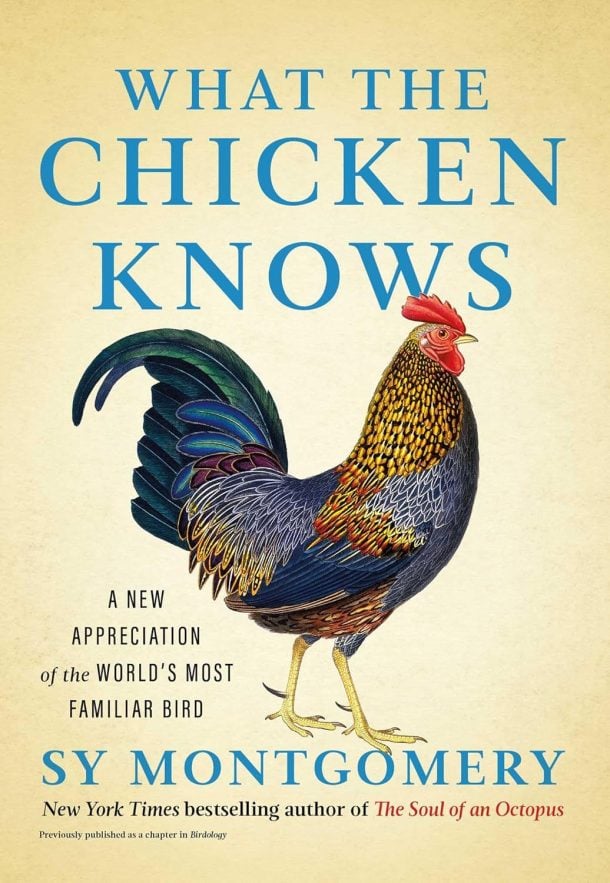
What the Chicken Knows by Sy Montgomery
Setting the record straight about the humble chicken. Montgomery’s portrayal of what she terms the “Chicken Universe” is packed with colorful characters, ranging from variously feathered chickens to variously informed neighbors, friends, and other interlopers who offer advice and provide delightful anecdotes. In turns laugh-out-loud funny and tear-jerking, Montgomery’s account is consistently thought-provoking and informative. The author reframes the assumptions that many laypeople carry about chickens, debunking stereotypes about their lack of intelligence with support from specific scientific studies and stories from her own experiences with her “Ladies,” as she affectionately refers to her flock of hens. From the outset, Montgomery states that “almost everything people ‘know’ about chickens is wrong,” and goes on to prove as much throughout her account. The author acknowledges these misunderstandings without much judgment, instead setting the record straight and sharing the vibrant and varied lives of these birds. As she says, “[Chickens] have a great deal of wisdom to share with us, as well as comfort and joy.” Montgomery does not shy away from the more unsavory, less palatable truths of these animals, at times criticizing the human tendency toward anthropomorphism and at other times wryly questioning if she too is falling victim to the very same. With a subject matter that could easily lend itself to sanctimonious sentimentality, Montgomery maintains a degree of discernment, insisting that chickens do not deserve our respect because of the ways in which they are similar to humans, but instead for the simple fact that they are living things, with their own lives. An unflinching and surprisingly heartfelt account of a complex ecosystem. Kirkus Reviews, September 2024.
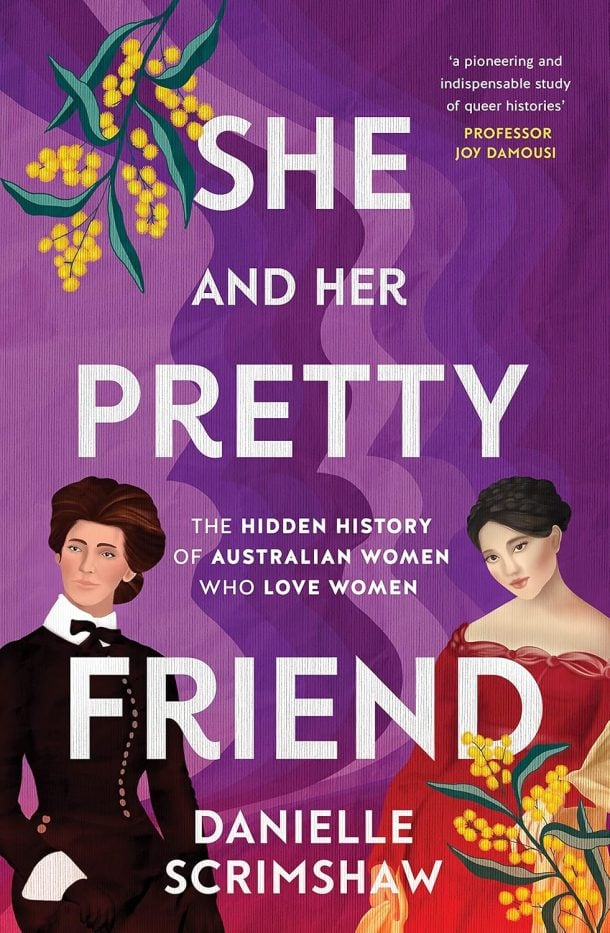 She and Her Pretty Friend by Danielle Scrimshaw
She and Her Pretty Friend by Danielle Scrimshaw
Danielle Scrimshaw’s debut, She and Her Pretty Friend, is a history of queer Australian women. In a light and intriguing tone, Scrimshaw pieces together what little evidence there is—letters, diary entries, notes from biographies—to create a comprehensive timeline since colonisation of LGBTQIA+ people’s existence in Australia, with one early chapter acknowledging First Nations People’s place in queer history and the devastating effects of colonialism. We’re shown relationships between suffragettes, convict women and poultry farmers. We’re shown newspaper clippings with bizarre language used to describe those who were caught—‘wretches in human form’—as well as those who weren’t—‘lived like sisters’. As we move through the 19th century and into the 20th, we learn about the first queer bar in Australia, the 1970s lesbian movement and a two-week protest in the 80s. The author is careful to note that while we can draw conclusions about the nature of relationships from the past, we can never really know the details. And what’s more, we can never know how these women would have identified had they been able to access modern language and concepts of sexuality, gender and identity. She and Her Pretty Friend is another a piece of the puzzle that is unearthing women’s stories from the past. It’s a beautifully told history for readers who enjoyed You Daughters of Freedom by Clare Wright and An Unconventional Wife by Mary Hoban.Books+Publishing, March 2023.
Return to top
POETRY
| Oliver, Bebe | If this is the end |
| Shiosaki, Elfie | Refugia |
Return to top
SCIENCE FICTION & FANTASY
| Agajanian, Isabel | Modern divination |
| Hart, Emilia | The sirens |
| McIntosh, Fiona | Blood and memory |
| Woods, Kell | Upon a starlit tide |
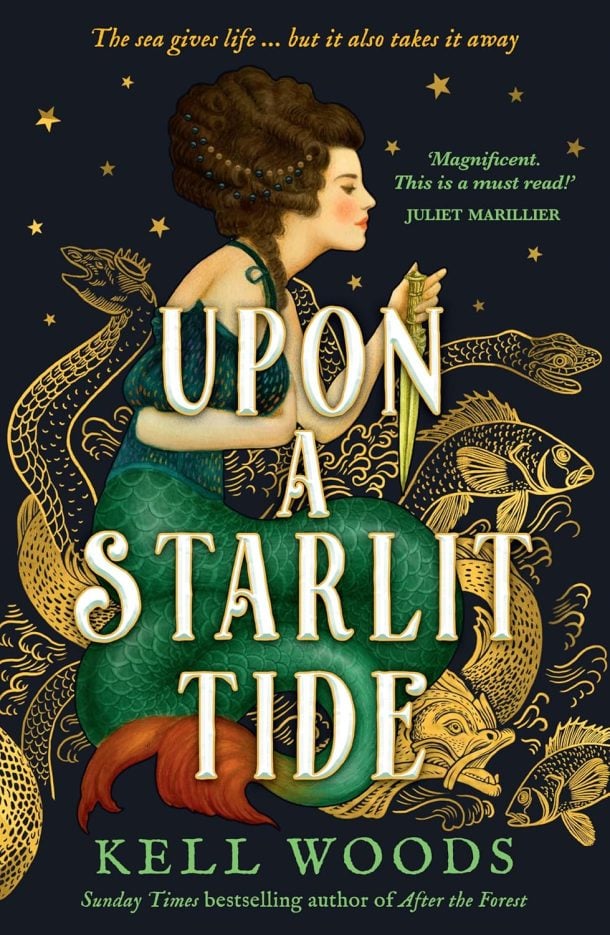
Upon a Starlit Tide by Kell Woods
Woods (After the Forest) enchants in this sophisticated fairy tale that riffs on both “The Little Mermaid” and “Cinderella.” Lucinde “Luce” Léon is the youngest adoptive daughter of Jean-Baptiste Léon, a distinguished ship owner in 1758 Saint-Malo, Brittany. All her life, Luce has suffered from her misshapen feet, which cause her immense pain with every step. This ache is only soothed when she escapes into the sea, often secretly exploring its depths and retrieving stolen treasures from shipwrecks alongside her dear friend Samuel Thorner, a roguish smuggler. One day, Luce rescues an unconscious stranger near shore and they share an unforgettable kiss before she flees. The man tuns out to be Morgan de Châtelaine, the dashing son of another influential ship-owning family and captain of the recently wrecked Dauphin. To celebrate Morgan’s return, the de Châtelaines throw a ball, and all the local maidens flock at the chance to win the young captain’s heart. This night could finally lead Luce to a happily ever after—but she has too many dark secrets plaguing her, and every day danger draws closer to their harbor. Woods pays loving tribute to two classic tales while crafting an intricate coming-of-power plot that is entirely its own. Readers will be enthralled. Publisher’s Weekly, November 2024.
Return to top
New additions to eBooks at SMSA
EBOOKS
| Biography | Akkad, El | One day, everyone will have always been against this |
| Biography | Davies, Kerrie | Miles Franklin undercover |
| General | Baldacci, David | Strangers in time |
| General | McFarlane, Fiona | Highway 13 |
| General | Stanley, Jessica | Consider yourself kissed |
| Mystery | Adams, Ellery | The little lost library |
| Mystery | Bhadreshwar, Nina | The day of the roaring |
| Mystery | Cambridge, Colleen | A murder most French |
| Mystery | O’Connor, Carlene | Some of us are looking |
| Sci-Fi/Fantasy | Kitasei, Yume | The stardust grail |
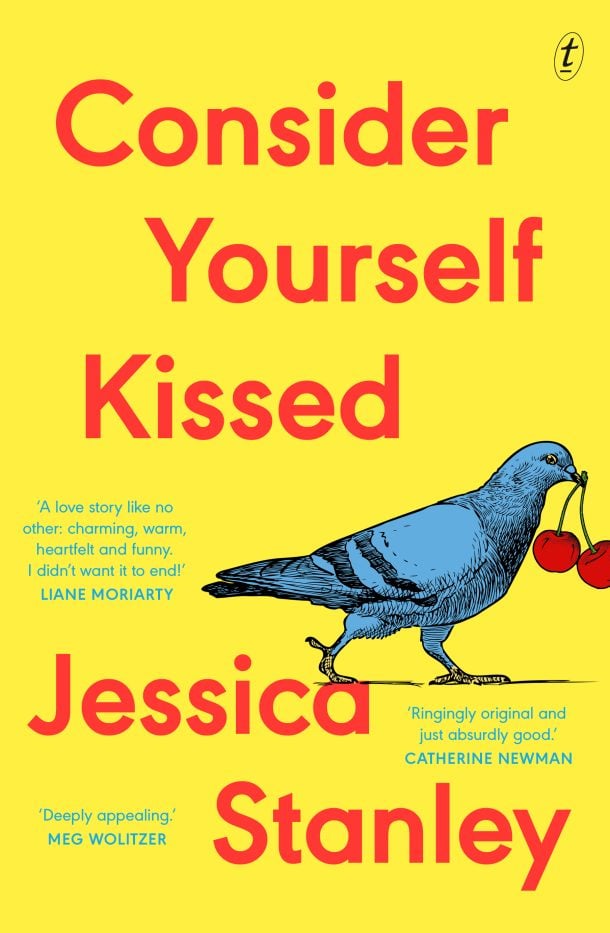 Consider Yourself Kissed by Jessica Stanley
Consider Yourself Kissed by Jessica Stanley
Consider Yourself Kissed is a romance set in London against the backdrop of the UK’s escalating political crises of the 21st century: Tory leadership struggles and re-election and Brexit, culminating in the COVID-19 pandemic. It’s also a story of personal crisis, exploring the labels women adopt that render them invisible: ‘mother, writer, worker, sister, friend, citizen, daughter, (sort of) wife’. Coralie has fled an abusive workplace and break-up in Sydney and moved to London. A writer now channelling her creative energy into marketing, she’s ripe for a meet-cute, which the novel delivers early on. Enter Adam, a political commentator and devoted father to his four-year-old daughter from a previous marriage. Consider Yourself Kissed is not the tumultuous bildungsroman we’ve come to expect from romances set in the big city. Instead, it’s a novel about finding love but losing yourself and the journey to reclaiming that self. Jessica Stanley (A Great Hope) acutely paints the entrapment of motherhood and the gendered distribution of domestic labour, even in a progressive, loving relationship. The novel balances literary depth and a breezy, engaging style, making Consider Yourself Kissed the elusive next Sorrow and Bliss for fans of Tia Williams and Miranda Cowley Heller. Stanley portrays Coralie with tenderness, capturing a complicated woman on the precipice of breaking. She interrogates the premise of a ‘happily ever after’ in a domestic setting, delivering a lovable, compelling novel about what it means to be a woman today. Books Publishing, February 2025

The Little Lost Library by Ellery Adams
Adams’s seventh “Secret, Book and Scone Society” novel (following Paper Cuts) has Miracle Books owner Nora Pennington embroiled in another mystery when her eccentric and elderly bibliophile client Lucille Wynter turns up dead. What seems to be a tragic accident is actually murder, and Lucille trusted only Nora to solve the riddles to find the lost library, find her murderer and unearth the secrets that have haunted Wynter House for decades. The novel is perfect for series fans or readers who love a quaint cozy full of small-town charm. The writing, characterizations, and intricacy of the narrative allow this book to stand tall with other contemporary mysteries outside the cozy category. With triggering topics of hoarding, addiction, and other types of abuse as thematic elements, this novel exhibits more depth than is often lacking in other cozies. VERDICT Adams’s fans and devoted readers of this type of novel will not be disappointed, but there is also enough substance and intrigue to satisfy fans of more hardboiled mysteries. Even non-series readers can jump right in as Nora encounters her latest adventure. Library Journal, August 2024
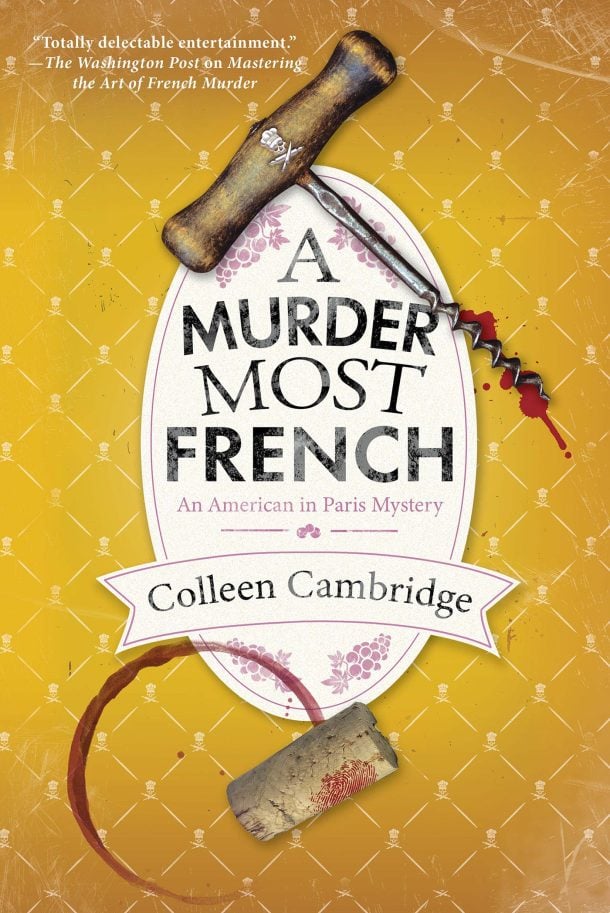 A Murder Most French by Colleen Cambridge
A Murder Most French by Colleen Cambridge
Julia Child returns in Cambridge’s sprightly second cozy featuring the legendary chef (after Mastering the Art of French Murder), who once again asks her American expat neighbor, Tabitha Knight, to help solve a mystery—this time, a series of wine-based slayings in 1950s Paris. During a cooking demonstration at L’École du Cordon Bleu, where Julia studies French cuisine, a famous chef dies after taking a sip of Volnay Clos de la Rouge from the rare 1893 vintage. Toxicology reports indicate that cyanide is the culprit—but who would add poison to such a precious wine? When a string of other figures in the Parisian culinary scene also die from poisoned vino, Julia taps Tabitha to flex her formidable powers of deduction, decipher clues, and risk her life and limb to ferret out the culprit. While fair-play fans will have plenty of fun following along with the friends’ investigations, it’s Julia’s sensuous recipes, lusciously described visits to the market, and fascinating tour of a subterranean mushroom farm that give this book its tantalizing flavor. The results will satisfy foodies, armchair travelers, and old-fashioned mystery lovers alike. Publisher’s Weekly, March 2024
 Some of Us Are Looking by Carlene O’Connor
Some of Us Are Looking by Carlene O’Connor
There are watch parties for the night’s meteor showers all over Ireland’s Dingle Peninsula, and veterinarian Dimpna Wilde has plans to meet with friends, including Detective Inspector Cormac O’Brien. A local man, Chris Henderson, has recently complained to the Garda about a group of four people, two dogs, and a parrot in a small caravan. Then Henderson turns up dead, the victim of a hit-and-run, while Dimpna frantically tries to save two foxes who were hit by the same car. Before Dimpna can even leave her clinic, one of the women from the caravan, Brigid Sweeney, shows up in a blood-covered jacket with a wild story about a knife, a man, and a rabbit. Dimpna thinks Brigid is lying, but the next morning she finds Brigid’s body tied to a tree with her hand missing and a rabbit’s foot in its place. A troubled O’Brien refuses to take the lead in either murder case, but he can’t let go. Dimpna, with her love of animals, is dragged deeper into the case, as O’Brien struggles to find a brutal killer. VERDICT There’s a surprising conclusion in this sequel to No Strangers Here. Sarah Stewart Taylor’s fans will appreciate O’Connor’s dark, atmospheric Irish mystery. Library Journal, July 2023
 The Stardust Grail by Yume Kitasei
The Stardust Grail by Yume Kitasei
Kitasei’s outstanding sophomore outing clears the high bar she set in The Deep Sky, combining a high-stakes space adventure with exquisitely crafted worldbuilding and plausibly imagined interspecies communication. Maya Hoshimoto, a doctoral student studying comparative cultures, is haunted by her past as a notorious art thief who pulled off daring, dazzling heists until finally being caught. After escaping from prison alongside Auncle, a member of the tentacled Frenro species, creators of the Interstellar Web that connects the universe’s solar systems, who have “a sort of peripheral vision of the past and future of certain versions of the universe,” she’s lying low. Maya’s life is upended again, however, when she learns that a lost record of an expedition in search of the stardust grail, an artifact essential to the continued survival of the Frenro, has resurfaced, even as an unknown force has begun to destroy the nodes linking the universe’s solar systems. These developments take Maya back into space, and to a reunion with Auncle, to find the last remaining grail, and avert disaster. Kitasei makes the duo’s search more than a MacGuffin hunt, ensuring emotional involvement by gradually revealing the morally ambiguous choices Maya made in the past and might be tempted to repeat. Readers will be riveted. Publisher’s Weekly, April 2024
Return to top
AUDIOBOOKS
| General | Arsen, Isa | The unbecoming of Margaret Wolf |
| General | Jenkins, Joanna | The bluff |
| General | Lally, Megan | No place left to hide |
| General | Todd, Ruby | Bright objects |
| General | Wells, Christine | The Paris gown |
| Mystery | Arceneaux, Danielle | Glory daze |
| Mystery | Archer, C. J. | The journal of a thousand years |
| Mystery | Reid, Diana | Signs of damage |
| Mystery | Shapiro, Irina | Murder at the Orpheus theatre |
| Sci-Fi/Fantasy | Andrews, Ilona | Magic bites |
 The Unbecoming of Margaret Wolf by Isa Arsen
The Unbecoming of Margaret Wolf by Isa Arsen
Saskia Maarleveld gives an impressive performance of this audiobook, set in the 1950s theater worlds of New York City and New Mexico. Maarleveld splendidly portrays the unsettled persona of Margaret Wolf, who flees a difficult life to follow her dream of becoming a Shakespearean actress. Maarleveld skillfully balances Margaret’s histrionic tendencies with the sadness she experiences in her personal and professional lives, especially when she marries Wesley, a closeted gay actor. The two join a production in New Mexico, where each begins a sexual relationship with a magnetic costume designer named Felix. Maarleveld evokes the atmosphere of the theater and conveys a time in which conformity was the norm. Those who enjoy a psychological bent to their stories will appreciate Maarleveld’s polished performance. AudioFile, 2025
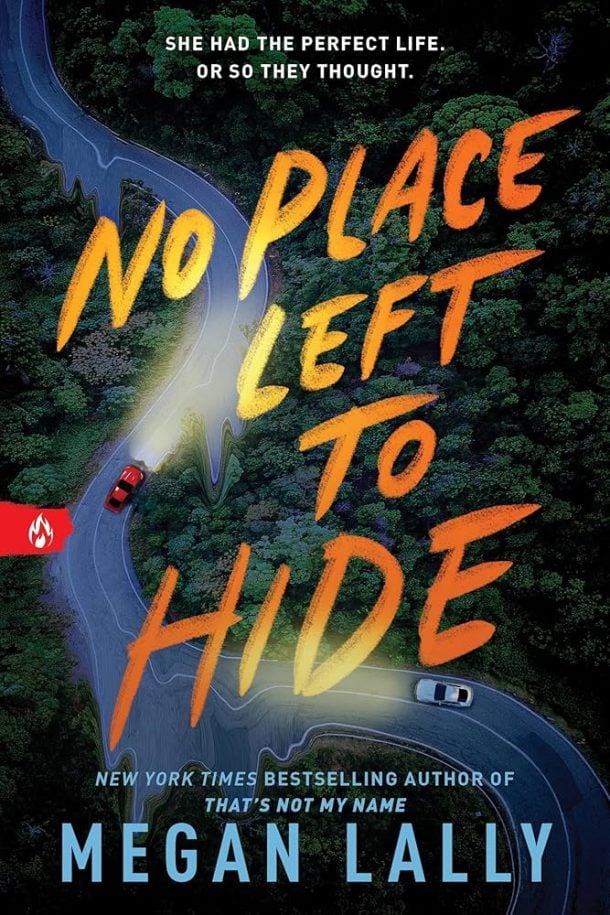 No Place Left to Hide by Megan Lally
No Place Left to Hide by Megan Lally
Pacific Northwest Waldorf Prep senior Brooke Goodwin narrates this propulsive tale of revenge, surprising revelations, and confounded expectations by Lally (That’s Not My Name). Class president Brooke, the daughter of a powerful family, is almost guaranteed acceptance into Yale—she is a legacy, after all. The only potential snag is her involvement in an “incident” involving former friend Claire Heck. Alternating chapters shift between present day and flashbacks to a party that occurred three months prior to the book’s start. “Before” Brooke throws a rager at her family’s lake house, during which she and Claire fight. “Now” Brooke attends a gathering at a beach house on the Oregon coast, where she connects with her school crush, hot soccer player Dylan Miller, Claire’s former boyfriend. Both parties are filled with genre-typical happenings relating to teen drama and romance—until circumstances take a deadly turn. Mind-bending twists shift the action into high gear as Brooke endeavors to make it home alive in a thriller that’s sure keep readers on the edges of their seats. Publisher’s Weekly, October 2024
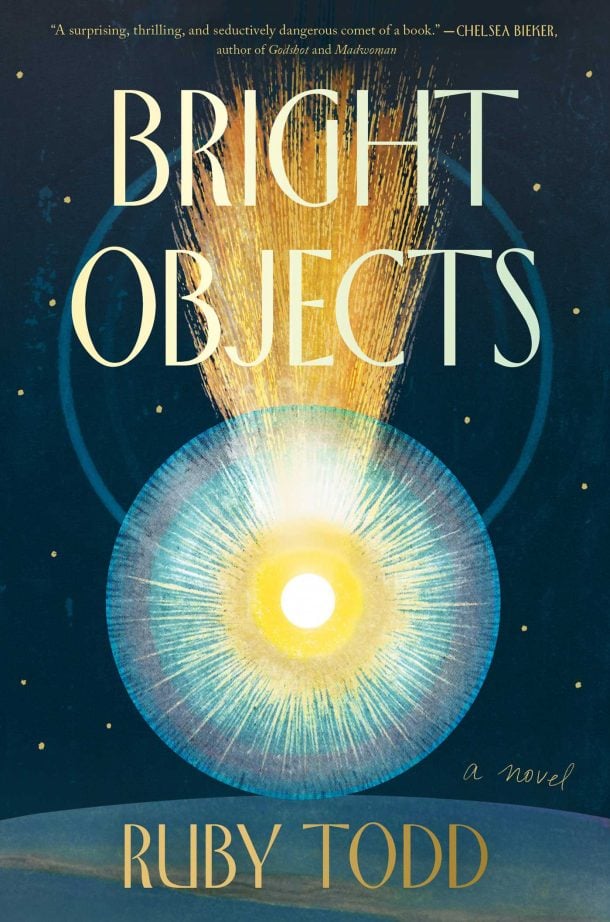 Bright Objects by Ruby Todd
Bright Objects by Ruby Todd
Part literary mystery, part astronomy lesson, this audiobook, narrated by Casey Withoos, provides listeners with a compelling story set in Australia in 1997. Sylvia Knight is recovering from the hit-and-run that made her a widow more than two years ago. She believes she knows who killed her husband, but no one has been held accountable. Sylvia is working as an assistant in a funeral home when she meets Theo St. John, the discoverer of a rare comet that is approaching town. As it draws closer, quirky Joseph Evans, a mystic, believes it brings a celestial message. Withoos does a remarkable job of creating distinctive characters and capturing the story’s setting as Sylvia contends with grief and the complexities of moving on. AudioFile, 2024

The Paris Gown by Christine Wells
Oh, to be young in Paris in the 1950s. Claire, Gina, and Margot are three best friends with a routine of gazing through the windows of the Dior showroom, fantasizing about a future in which wearing such exquisite couture would be possible. Time and distance, however, scatter the trio, each with her dream unfulfilled. Claire aspires to be a Michelin-starred chef, but her father’s announcement that he has sold the family bistro leaves her without a viable career path. American socialite Gina, whose family’s loss of fortune is deemed a political liability for her now ex-fiancée, returns to Paris to pursue her calling as a novelist. They both miss their compatriot, Margot, who hasn’t been heard from since she returned to Australia. Little do they know that Margot works as a shopgirl at that very Dior showroom, having fled an abusive marriage. An adept historical novelist, Wells (The Royal Windsor Secret, 2023) excels at bringing mid-twentieth-century Paris to life in a touching tale that emphasizes the value of true friendship. Booklist, July 2024
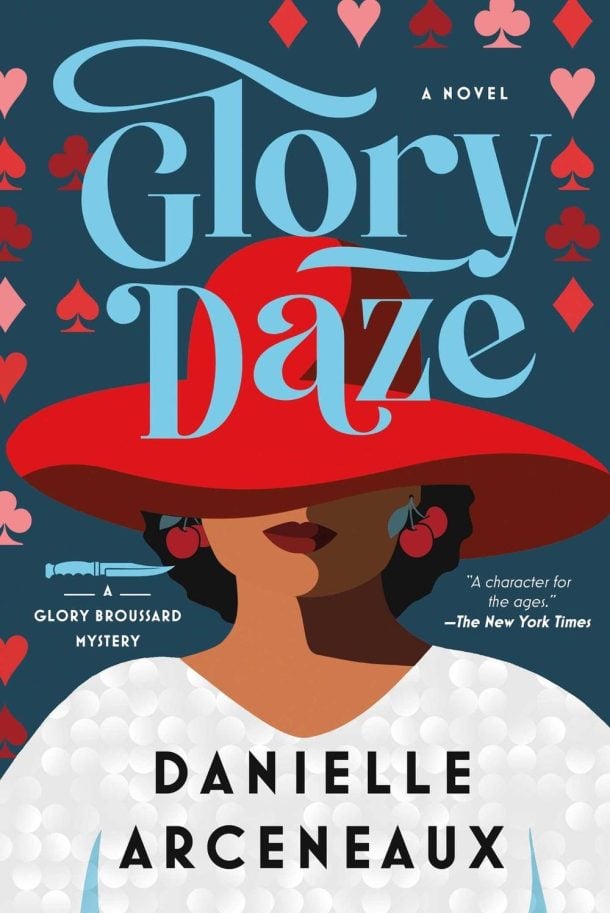 Glory Daze by Danielle Arceneaux
Glory Daze by Danielle Arceneaux
Edgar winner Arceneaux’s charming sequel to Glory Be finds Louisiana bookie Glory Broussard reluctantly tracking down the killer of her ex-husband, Sterling. Glory—a self-described “Black woman who has done some living”—is sitting at her usual table in CC’s Coffee House when she’s approached by Valerie Broussard, the woman she blames for breaking up her marriage. Sterling has gone missing, according to Valerie, who begs for Glory’s help in finding him. Despite her misgivings, Glory pays a visit to Sterling’s rental property, where she finds him dead on the floor with a knife in his chest. Though she’s perfectly content to let the police handle the case, her adult daughter, Delphine, insists Glory investigate, so she heads off to gather clues at the local casino and a horse racing stable. Along the way, Glory juggles her detective work with her duties as organizer of the Red Hat Society’s highly competitive Mardi Gras festivities and her suspicion that Delphine is keeping secrets from her. Arceneaux continues to shrewdly subvert cozy mystery tropes, placing her spirited heroine in a world with real stakes and genuine adversity, and she throws a few clever curveballs into the central whodunit plot. This series deserves a long life. Publisher’s Weekly, January 2025
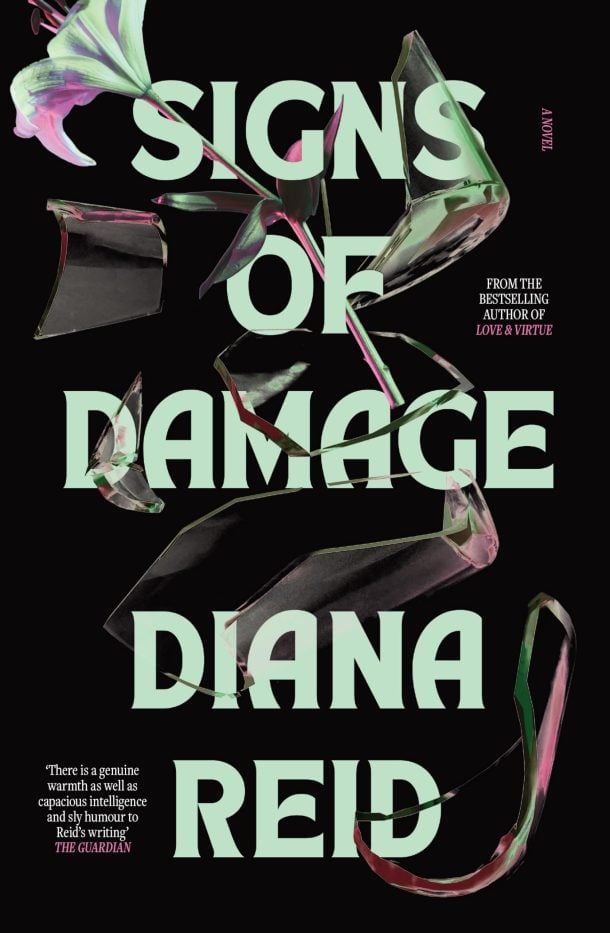
Signs of Damage by Diana Reid
Diana Reid’s third book is an engrossing, meticulously crafted drama that explores memory, trauma, repression and self-preservation, examining how these themes intersect, overlap, are misinterpreted or deliberately distorted to devastating consequences. Signs of Damage opens in 2024 with a fatal fall from a balcony, though we do not know who died or whether it was the result of foul play. The novel gradually reveals the sinister undercurrents of the Kelly family’s idyllic 2008 summer holiday in France through multiple viewpoints and dual timelines. The central question is what happened while 13-year-old Cass, a friend of the youngest Kelly daughter, was trapped in a centuries-old icehouse on the French property, and whether her present-day seizures are conventionally epileptic or are rather a psychosomatic manifestation of repressed trauma. Was Cass assaulted in the icehouse, and if so, by whom? Reid (Love & Virtue, Seeing Other People) has a masterful narrative command, and here strikes just the right balance between wry humour and rigorous literary drama. Her prose is precise, rich with imagery and foreshadowing, yet never pretentious. Reid’s flair for free indirect style and astute social commentary, reminiscent of Zadie Smith and George Eliot, allows her to make even the most flawed characters both compelling and compassionate. Signs of Damage is an intelligent yet accessible novel that will appeal to fans of both literary fiction and the mystery and thriller genres. Books Publishing, January 2025


